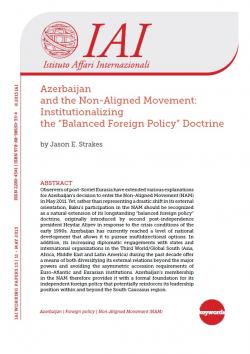Azerbaijan and the Non-Aligned Movement: Institutionalizing the "Balanced Foreign Policy" Doctrine
Observers of post-Soviet Eurasia have extended various explanations for Azerbaijan's decision to enter the Non-Aligned Movement (NAM) in May 2011. Yet, rather than representing a drastic shift in its external orientation, Baku's participation in the NAM should be recognized as a natural extension of its longstanding "balanced foreign policy" doctrine, originally introduced by second post-independence president Heydar Aliyev in response to the crisis conditions of the early 1990s. Azerbaijan has currently reached a level of national development that allows it to pursue multidirectional options. In addition, its increasing diplomatic engagements with states and international organizations in the Third World/Global South (Asia, Africa, Middle East and Latin America) during the past decade offer a means of both diversifying its external relations beyond the major powers and avoiding the asymmetric accession requirements of Euro-Atlantic and Eurasian institutions. Azerbaijan's membership in the NAM therefore provides it with a formal foundation for its independent foreign policy that potentially reinforces its leadership position within and beyond the South Caucasus region.
Paper prepared for the Istituto Affari Internazionali (IAI), May 2015.
-
Details
Roma, Istituto Affari Internazionali, May 2015, 23 p. -
Issue
15|11 -
ISBN/ISSN/DOI:
978-88-98650-35-4
Introduction
1. Azerbaijan and NAM: principles and objectives
2. Azerbaijan and institutional characteristics of NAM
3. NAM and Azerbaijan’s Global South diplomacy
Conclusion and Policy Implications
References



